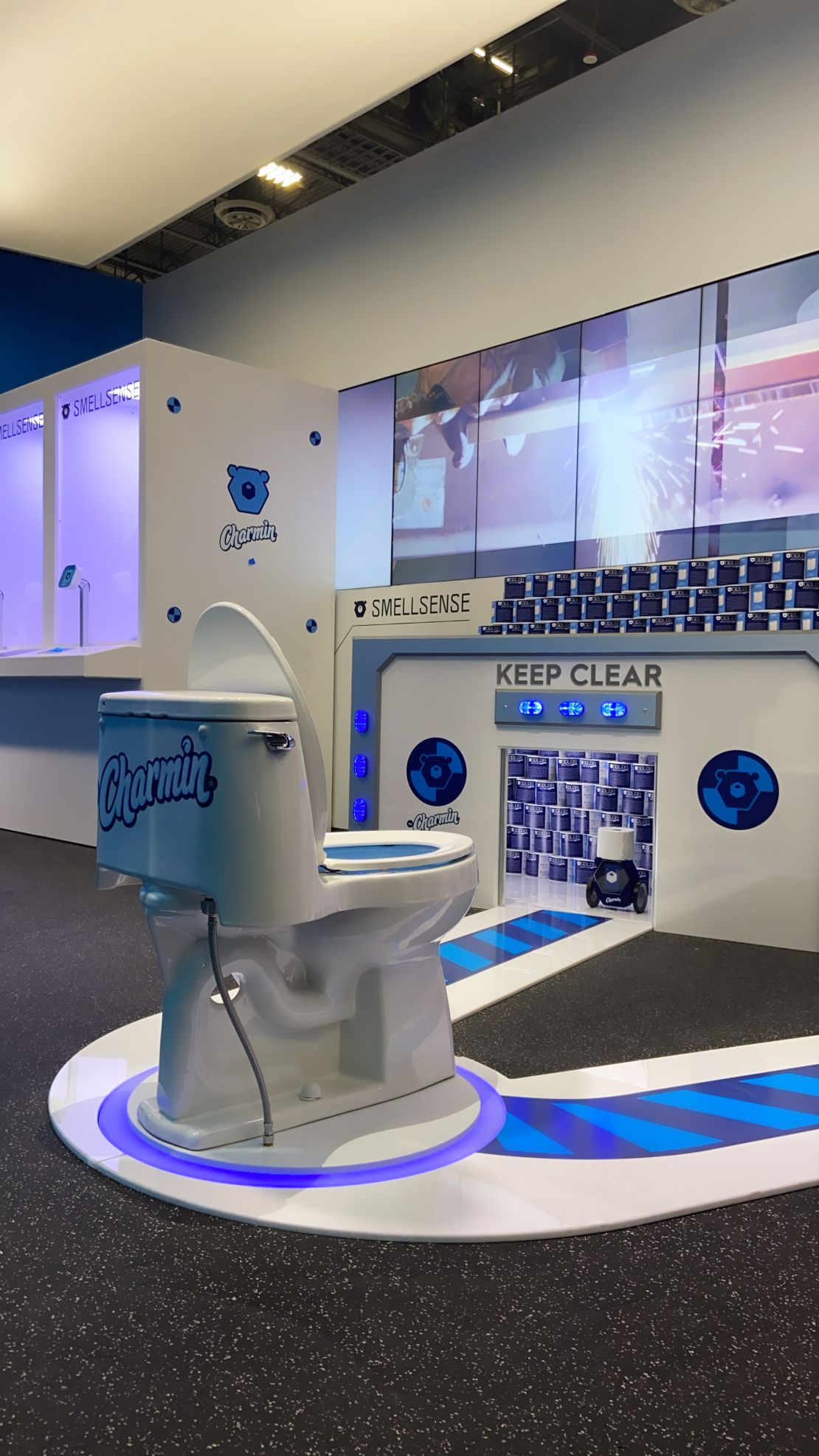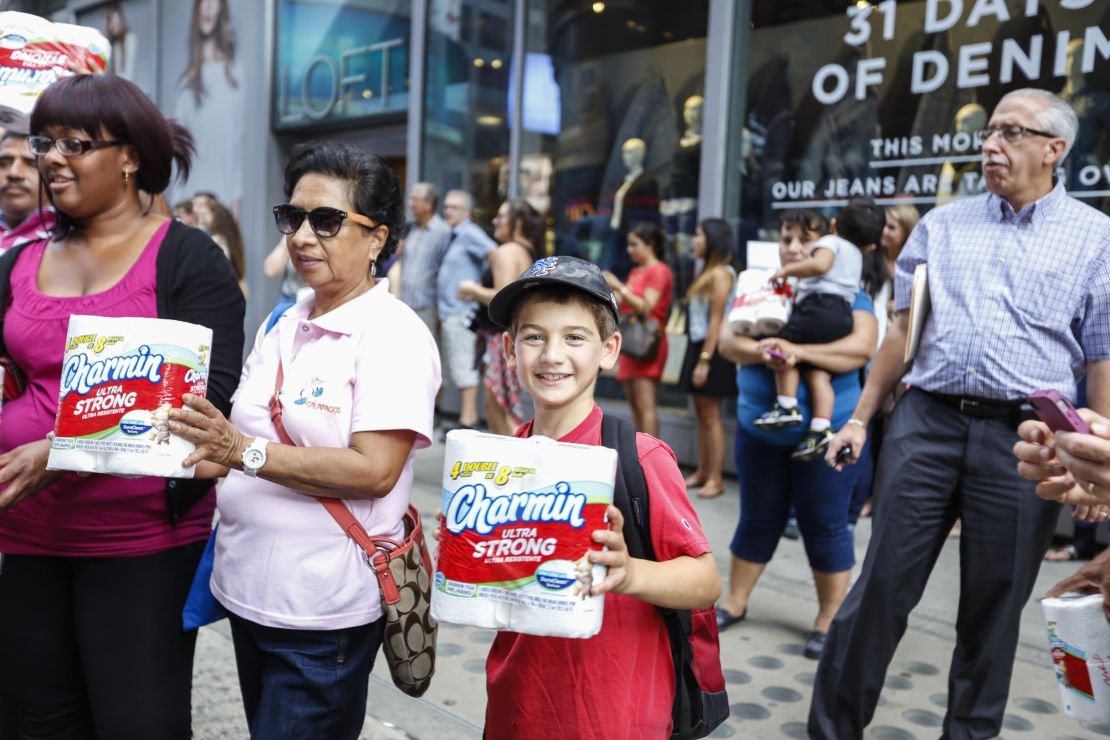One of the surprise stars at the 2020 CES consumer electronics show this week was a cute, tiny robot with an electronic teddy bear face that brings toilet paper rolls to bathroom users on command.
The “RollBot” is designed to solve a common household problem: When you’re in the middle of a bathroom break and you realize you’re out of toilet tissue. The miniature, two-wheeled droid can be controlled using a smartphone app.
The unusual gadget is part of GoLab, one of the latest marketing innovations commissioned by Charmin, the P&G-owned toilet paper and tissue brand known for its creative – and often humorous – marketing exploits.
“This builds on our mission to always bring better bathroom experiences to unexpected places and showcases our relentless obsession with helping people ‘Enjoy the Go,’” a Charmin spokesperson running the GoLab booth at CES for Charmin, told CNN Business.

The gambit seems to be paying off: RollBot amused many at the techonology trade show in Vegas, gaining added attention on social media and in the press.
In addition to RollBot, Charmin unveiled a foul odor detector called “SmellSense” at CES. The electronic device warns users when a restroom is too, well, malodorous, to use and, more importantly, alerts them when said stench has dissipated. The brand’s Oculus Rift-powered virtual reality bathroom experience – known as “V.I.Pee” – allows customers wearing the VR headset to metaphysically escape the confines of the conventional porta potty and immerse themselves in simulated environments, including a live concert.
Alas, none of these futuristic bathroom devices are for sale. That’s not the point, according to advertising professor Luke Sullivan, who said Charmin is doing this to sell more toilet paper, not robots.
“The point is getting eyeballs on the name Charmin any way they can,” Sullivan told CNN Business.
Sullivan is the author of “Hey Whipple, Squeeze This: A Guide to Creating Great Advertising,” which chronicles the history of commercial ads, in part, by examining Charmin’s classic, fictional grocery store manager and harried spokesman George Whipple.
The character, played by British-born actor Dick Wilson, who died in 2007 at the age of 91, and his “Please don’t squeeze the Charmin” TV commercials, the brainchild of ad firm Benton & Bowles, helped make Charmin and Mr. Whipple household names from the 1960s through the ’80s. In 1999, AdAge included the Mr. Whipple promotion in its Top 100 Campaigns of the 20th century.
Sullivan called the classic Charmin commercials “one of the most irritating campaigns of the space and time continuum,” while acknowledging they successfully embedded the brand in consumers’ minds.
Charmin’s ads may seem strange to some, because the topic of toilet time can be an uncomfortable taboo for many people, the company said. It designed its unique commercials to help break the ice.

“Poop anxiety is a real thing,” a Charmin spokesperson acknowledged.
Traditional TV ads don’t resonate as much with younger audiences in the social media age, so during the 2006 holiday season Charmin introduced “deluxe” public restrooms in outdoor destinations around the globe, starting with New York City’s Times Square. From 2006 to 2010, the stylish stalls gave hundreds of thousands of pedestrians more pleasurable place to use the bathroom than the average porta potty, fully stocked with Charmin toilet paper, of course.
In 2007, the promotion earned a Pro Award for Best Campaign Generating Brand Awareness and Trial Recruitment.
Charmin reintroduced its public restrooms campaign in Times Square during December of 2017. Last year, the company installed a $15,000 toilet bowl kiosk in Washington Square Park.
Sullivan described the shift from traditional commercials to publicity stunts as a transition from TV ads that interrupt a viewer’s leisure experience to content-based ads designed to be their own form of leisure.
“Now that we can skip commercials, interruption just doesn’t work anymore,” he said, “so marketers, the smart ones, are starting to develop content, things that are interesting in and of themselves.”
Charmin said the key to its ad success has been listening to its customers. All its GoLab advents, including Rollbot, were commissioned in response to common complaints about using the bathroom that customers have expressed to the company, perhaps laying the groundwork for future innovations.
“We start with understanding the true potty pain points everyone experiences and how can we address them in a real, yet playful way that is true to our brand,” a Charmin spokesperson added. “People use the bathroom six to seven times a day and spend on average 156 hours a year on the toilet, so ensuring everyone has the best bathroom experience is always top of mind for us.”




















